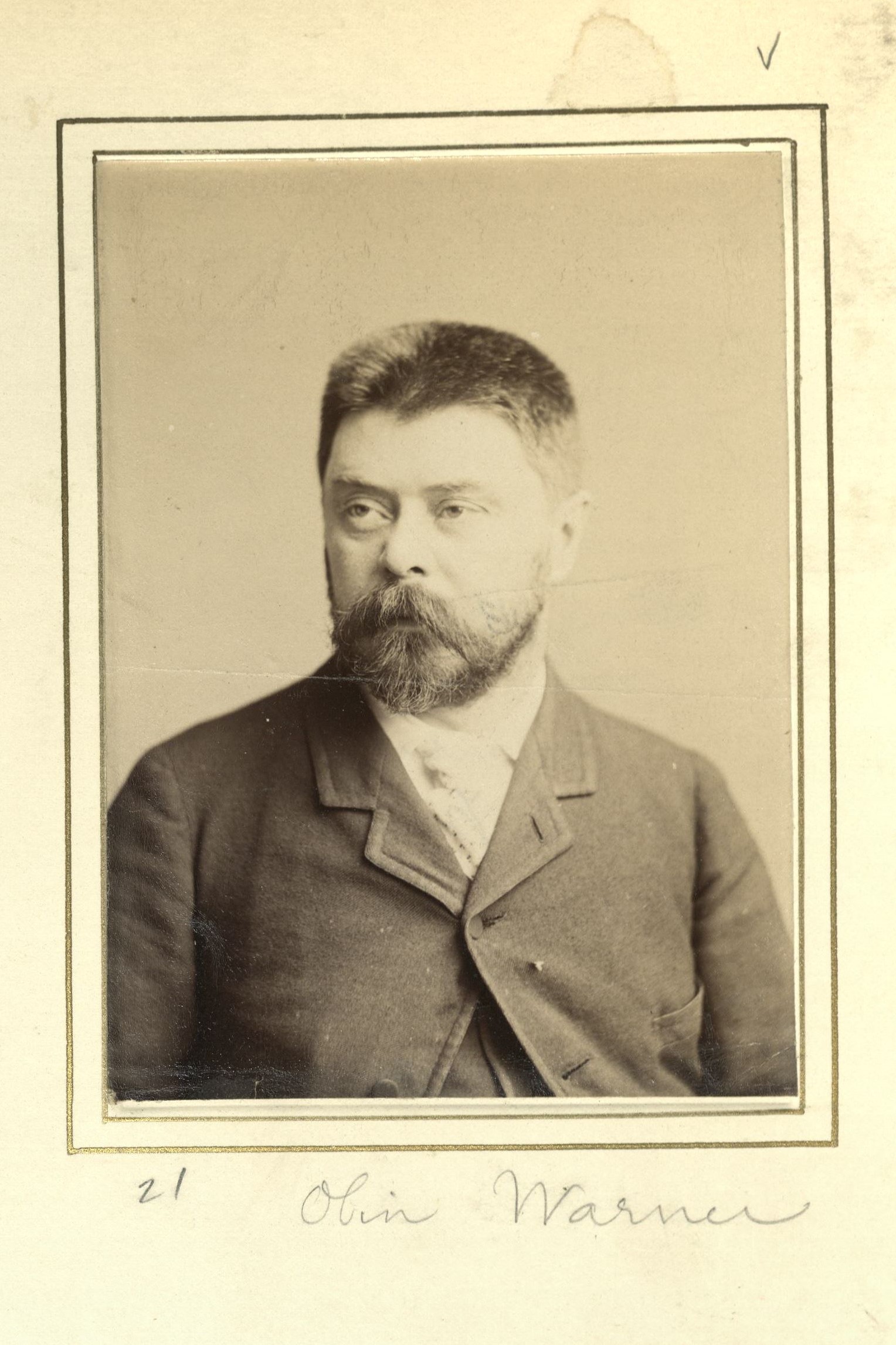Member Directory,
1847 - 1922
Adolph Alexander Weinman
Sculptor
Centurion, 1912–1952
Herbert Adams and Daniel Chester French
Durmersheim, Germany
Port Chester, New York
Age forty-one
Woodside, New York

Century Memorials
Adolph Weinman was born in Germany; but when he was a little boy, he came through the Gateway to America (Castle Garden) as an immigrant, and he lived here the rest of his life. The family had no money, and Weinman went to a public school on the East Side till he was fourteen. Then he went to work carving mirror frames, pistol grips, meerschaum pipes, and such things in a small studio. In the evenings, however, he studied sculpture at the Cooper Union; and there Philip Martini found him and took him with him to work on the World’s Fair in Chicago in 1893. Then Weinman knew he was going to be a sculptor.
His start was slow, but as he passed through his fourth decade, his output increased incredibly. His creative talent found outlets in the monumental sphinxes flanking the entrances to the Scottish Rites Temple in Washington, in the sculpture for the pediment of the Archives Building, and in the façade of the Post Office Building. A master of low relief, he did much to improve our coinage and designed the new dime and the half dollar issued in 1916. His superb statue of General Alexander Macomb in Detroit illustrates his genius in resolving that nightmare of all sculptors, the portrait statue. His ideal figures for the fountains of “The Rising Sun and “The Setting Sun” in the Court of the Universe at the Panama-Pacific Exposition in San Francisco in 1915 have since found permanent places in American museums, while his figures of Alexander Hamilton and DeWitt Clinton, for the Museum of the City of New York, and his three statues of Lincoln attest to his understanding of the hearts and minds of men.
It is remarkable that one with so little formal schooling in the liberal arts came to be the foremost sculptor of America. The fact is, of course, he was self-educated, and his education never ceased. To associate with Olin Warner and Augustus Saint-Gaudens was an inspiration and a vast mind-opener, and Weinman was a first-rate person who found his own level at the top.
Those who work with their hands and make tangible, visible things know a great satisfaction. A thing of beauty is a joy forever; its loveliness increases; it will never pass into nothingness.
George W. Martin
1953 Century Association Yearbook
Weinman was born in Germany and came to the U.S. when he was 10. He studied at Cooper Union and Art Students League, and with sculptors Augustus Saint-Gaudens and Philip Martiny, and later served as an assistant to Olin Warner and Daniel Chester French. Although Weinman is now best known as a medalist, when he was once introduced as such he vehemently denied being one and said that he was an architectural sculptor. Despite his objections he is still best remembered as the de-signer of the “Walking Liberty” half dollar and the “Mercury” dime, along with various medals for the Armed Services.
As an architectural sculptor, his work can be found on the Wisconsin, Missouri and Louisiana State Capitol Buildings. He became the sculptor of choice for the architects McKim, Mead, and White and designed sculpture for their Municipal Building, Madison Square Presbyterian Church and Pennsylvania Railway Station, all in New York City. A photograph of one of his angels in a landfill in New Jersey is one of the saddest reminders of the destruction of Penn Station in 1966. Elsewhere he created the dramatic frieze on the Elks National Shrine in Chicago and executed sculpture on the Post Office department Building, the Jefferson Memorial and the U.S. Supreme Court in Washington, D.C.
James Charlton
“Centurions on Stamps,” Part I (Exhibition, 2010)
Related Members
Member Directory Home-
 Herbert AdamsSculptorCenturion, 1894–1945
Herbert AdamsSculptorCenturion, 1894–1945 -
 Daniel Chester FrenchSculptorCenturion, 1894–1931
Daniel Chester FrenchSculptorCenturion, 1894–1931 -
 Alexander MacombArmy OfficerCenturion, 1855–1862
Alexander MacombArmy OfficerCenturion, 1855–1862 -
 Charles Follen McKimArchitectCenturion, 1882–1909
Charles Follen McKimArchitectCenturion, 1882–1909 -
 William Rutherford MeadArchitectCenturion, 1890–1928
William Rutherford MeadArchitectCenturion, 1890–1928 -
 Augustus Saint-GaudensSculptorCenturion, 1886–1907
Augustus Saint-GaudensSculptorCenturion, 1886–1907 -
 Olin L. WarnerSculptorCenturion, 1893–1896
Olin L. WarnerSculptorCenturion, 1893–1896 -
 Stanford WhiteArchitectCenturion, 1886–1906
Stanford WhiteArchitectCenturion, 1886–1906





